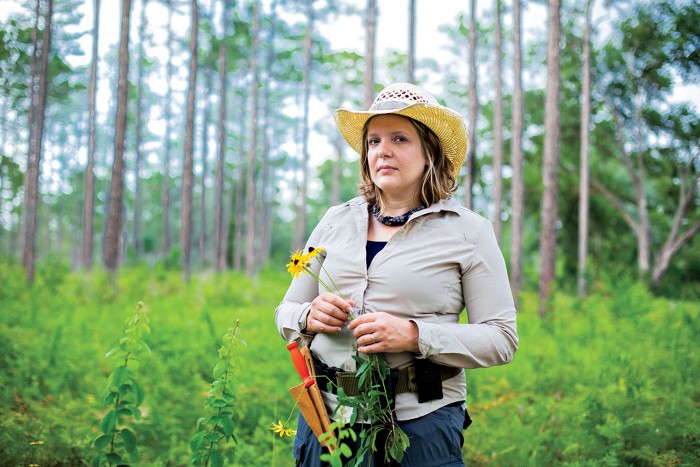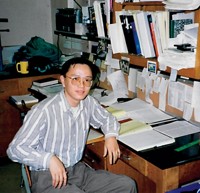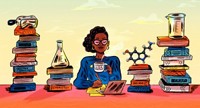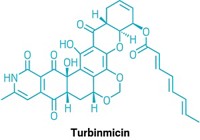Advertisement
Grab your lab coat. Let's get started
Welcome!
Welcome!
Create an account below to get 6 C&EN articles per month, receive newsletters and more - all free.
It seems this is your first time logging in online. Please enter the following information to continue.
As an ACS member you automatically get access to this site. All we need is few more details to create your reading experience.
Not you? Sign in with a different account.
Not you? Sign in with a different account.
ERROR 1
ERROR 1
ERROR 2
ERROR 2
ERROR 2
ERROR 2
ERROR 2
Password and Confirm password must match.
If you have an ACS member number, please enter it here so we can link this account to your membership. (optional)
ERROR 2
ACS values your privacy. By submitting your information, you are gaining access to C&EN and subscribing to our weekly newsletter. We use the information you provide to make your reading experience better, and we will never sell your data to third party members.
Natural Products
Movers And Shakers
Cassandra Quave’s adventure-filled memoir The Plant Hunter details challenges and triumphs in her search for anti-infective molecules
In her quest, the ethnobotanist has interviewed traditional healers, snipped shrubs on Mediterranean mountaintops, and fashioned a child’s toy into a laboratory tool
by Bethany Halford
October 17, 2021
| A version of this story appeared in
Volume 99, Issue 38

Cassandra Leah Quave’s work defies simple categorization. As an ethnobotanist, her research encompasses natural product chemistry, microbiology, medicine, botany, and journalism. One day, she might interview a village’s traditional healer on how to prepare a remedy for a skin infection; on another, she might use a low-cost fraction collector made from Lego Mindstorms pieces to isolate a molecule that could eventually become a medicine.
Now, Quave can add published author to her list of accomplishments. Her memoir The Plant Hunter will publish on Oct. 19. She spoke with C&EN about her passion for medicinal plants and the challenges she’s faced as a disabled woman in science.
Quave was born with skeletal abnormalities that prompted doctors to amputate her right leg below the knee when she was 3 years old. It was one of many surgeries Quave would have throughout her lifetime, but after that particular operation, she acquired a Staphylococcus aureus infection that nearly killed her. “At the age of three, I had looked death in the face,” she writes in The Plant Hunter. “There was more for me to do with this life.”
Vitals
▸ Home: Atlanta
▸ Favorite plant: Brazilian peppertree (Schinus terebinthifolia). “It’s a horrible, noxious weed that everyone hates. But I love it because it has some really cool triterpenoid acids.”
▸ Favorite field site: Marettimo, an Italian island west of Sicily
▸ Most dangerous field site: Sharr Mountains along the border of Kosovo and Albania. “There are land mines all over the place.”
▸ Must-have field tool: Clippers, which Quave holsters in her belt
▸ Must-have lab tool: Lab coat. “We scavenged all of our lab coats from other labs because I had no money when I was starting out my lab.” Quave bleached the coats, sewed pink buttons onto hers, and had her name custom embroidered onto the coat in green thread.
The book documents Quave’s journey from the small town in Florida where she grew up to the laboratories of Emory University, where she is the school’s herbarium curator and an associate professor in the Dermatology Department. Readers travel alongside Quave as she finds her calling in ethnobotany in the Amazon rain forest; as she gathers trimmings of the European chestnut tree (Castanea sativa) near a dormant volcano in Italy with her first child, just a few months old, on a blanket nearby; and as she pitches PhytoTEK, a drug discovery company she cofounded, during a competition at Harvard Business School.
Quave says she wrote the book to share her unique perspective as a disabled woman and mother with a career in science. “Students would come to me for advice as they were going through this path. And I just thought this might be a good way to get that story out there,” she says.
After her work received attention from major media outlets, including the New York Times Magazine and National Geographic, Quave decided it was time to give her perspective on medicinal plants. “Plants are amazing chemists. There’s just no way to beat their level of complexity when it comes to interesting scaffolds,” she says. “Being sessile creatures, plants can’t move. They can’t go to what they need, and so they really rely on these chemistries to communicate with the outside world.”
Quave points out that there are about 374,000 species of plants on Earth, of which approximately 33,000 have been used historically in medicine. “We’ve barely scratched the surface at looking at most of those rigorously,” she says. Quave estimates that scientists have explored only hundreds of those plants in depth. “My hope is that through reading this book, that some students and maybe even scientists that are already established will be inspired to look closer at plants as a source of new chemistries.” And for chemists who might have an interest in the field, Quave says, “there’s so much space to explore. There’s plenty of room for everybody.”
Quave’s hunt for medicinal plants begins in the historical literature and with interviews with people who use plants for healing. Her primary interest is in treating skin infections, in part because they’re easy to describe and are often caused by a microbial agent. Once Quave and her team have gathered a plant of interest—whether it’s from the Florida swamplands or from the border between Albania and Kosovo—they separate its chemical constituents and test them for anti-infective activity. Quave has two labs, one dedicated to chemistry and another for microbiology.
“I have great faith in natural products because these are compounds that are designed by nature to fill a specific purpose,” Quave says. Nature evolved these molecules to protect plants by warding off infectious agents, for example. It makes sense, then, that the same molecules might help humans keep similar microbes at bay. Even so, Quave acknowledges that hunting for natural products is difficult, time-consuming work. Microbes can quickly evolve resistance to anti-infectives, and large pharmaceutical companies have largely abandoned antibiotic research because the products often don’t make a return on their investment.

In The Plant Hunter, Quave writes about the hurdles she’s had to overcome on her career path. She’s had to manage physical challenges, such as getting to remote locations with her prosthesis. She’s also faced professional obstacles, like a colleague who verbally attacked her at a scientific conference. And there have been financial hardships, including starting a family on a graduate student’s salary.
Quave says securing funding is always the most challenging aspect of her work. “When you write a good paper and you have the data to back it up, in my experience, you’re pretty much assured of an outcome—it will get published. But with a grant, you can put all of your heart into something, and it just goes to die in some panel.” As a principal investigator, Quave says she’s constantly worried about funding and her ability to support her team. “In the end, you’re the one that is able or not able to form the funding to ensure they have a job,” she says. “That’s very stressful, and you’re always on short timelines. There’s not really a way to bank up money to have long-term planning.”
Quave hopes readers of The Plant Hunter will get a sense of how she’s managed the challenges in her life and career—but ultimately, she says, she wants them to gain a greater appreciation for the plants around them. “I really hope that they’ll stop and look at the plants that they encounter in their life, whether it’s produce at the grocery store, or it’s a walk through the forest, or a walk through their garden at home, and that they’ll just stop and think a bit about the history of these plants and their roles that they’ve played in improving their lives.”





Join the conversation
Contact the reporter
Submit a Letter to the Editor for publication
Engage with us on Twitter